We grew White Sonora Wheat over winter, and now that it’s May in Southern California, it is time to harvest. Our 4×4 foot raised bed was filled with tall, slender wheat sheaths that turned progressively more golden brown. The seed heads began to nod, and that’s when we knew it was time. Here’s how to harvest your own patch of heirloom wheat:
Admittedly, 4×4 isn’t very much room for growing wheat. Ideally we’d have 100 square feet for the task. At this point, it’s more for the biomass (all that great carbon material left over as food for the compost bin) than for the wheat itself. That said, growing an heirloom grain is always a tempting nerd-appropriate adventure. Perhaps after this you will want to give it a try.
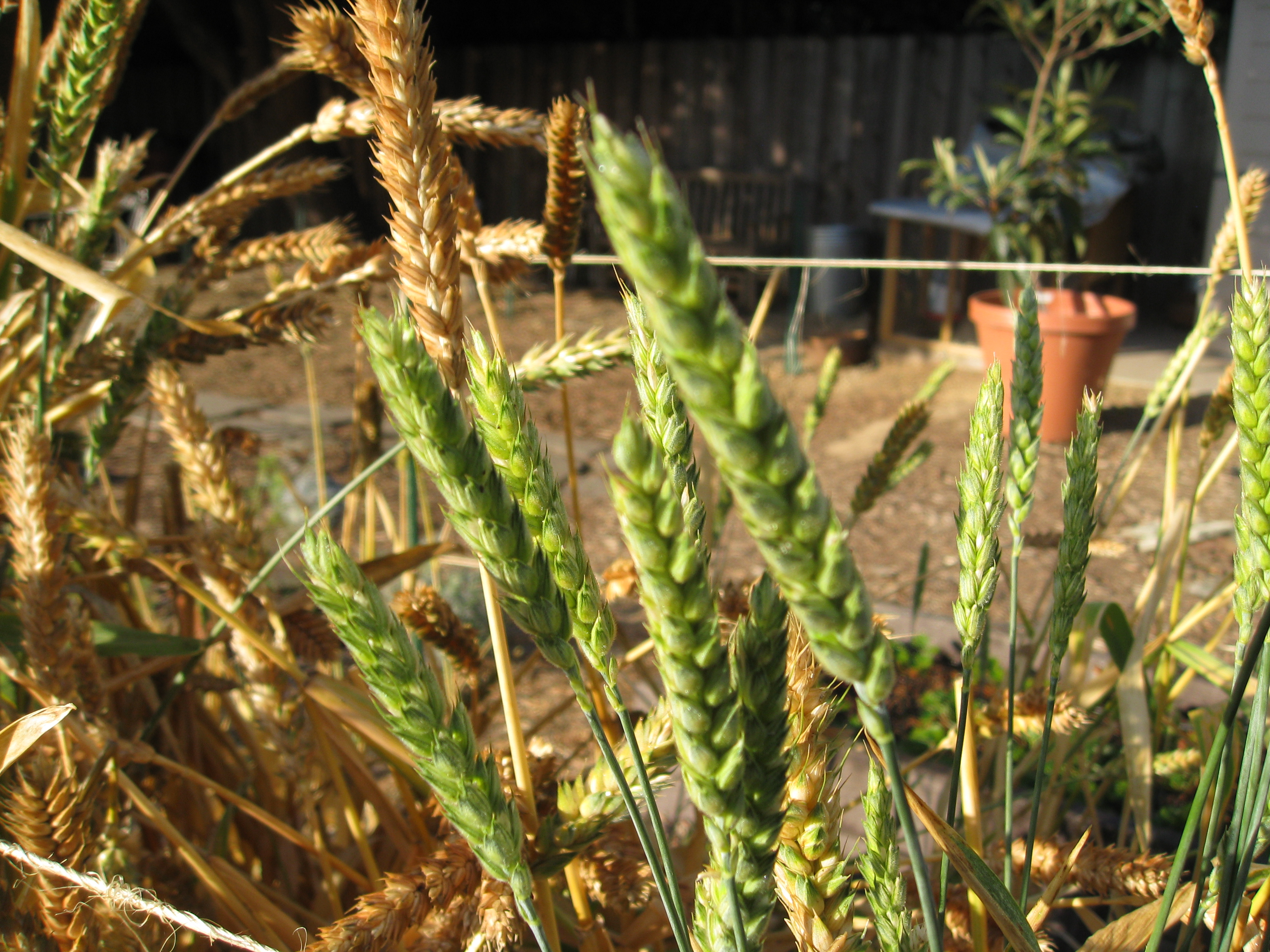
We had to corral our wheat with twine around the raised bed to keep it from spilling out into the pathway. A rebar stake in each corner and two levels of twine kept the crop upright.
1) Color – The first sign of readiness is color. Look for spikes with no traces of green left.

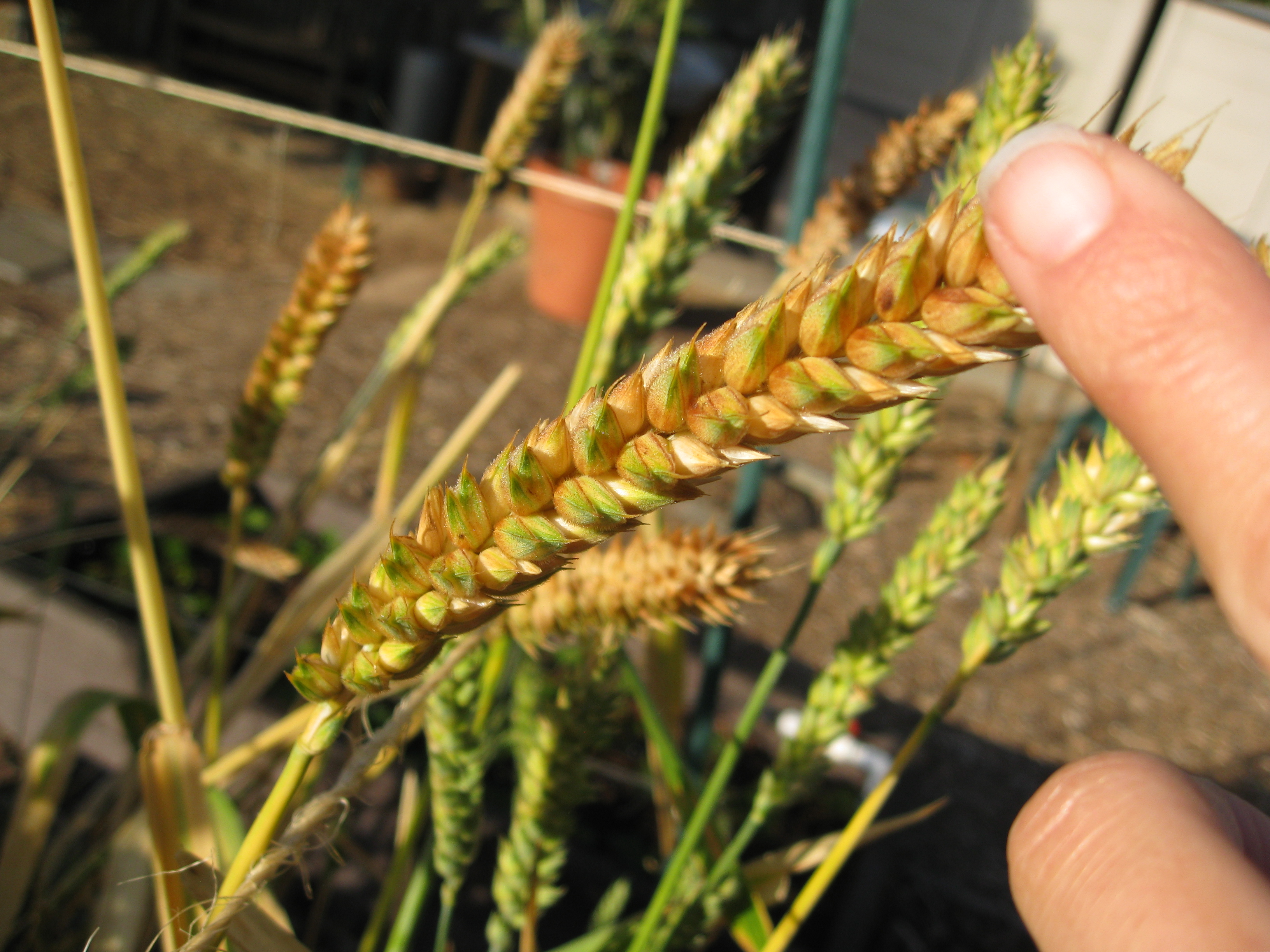
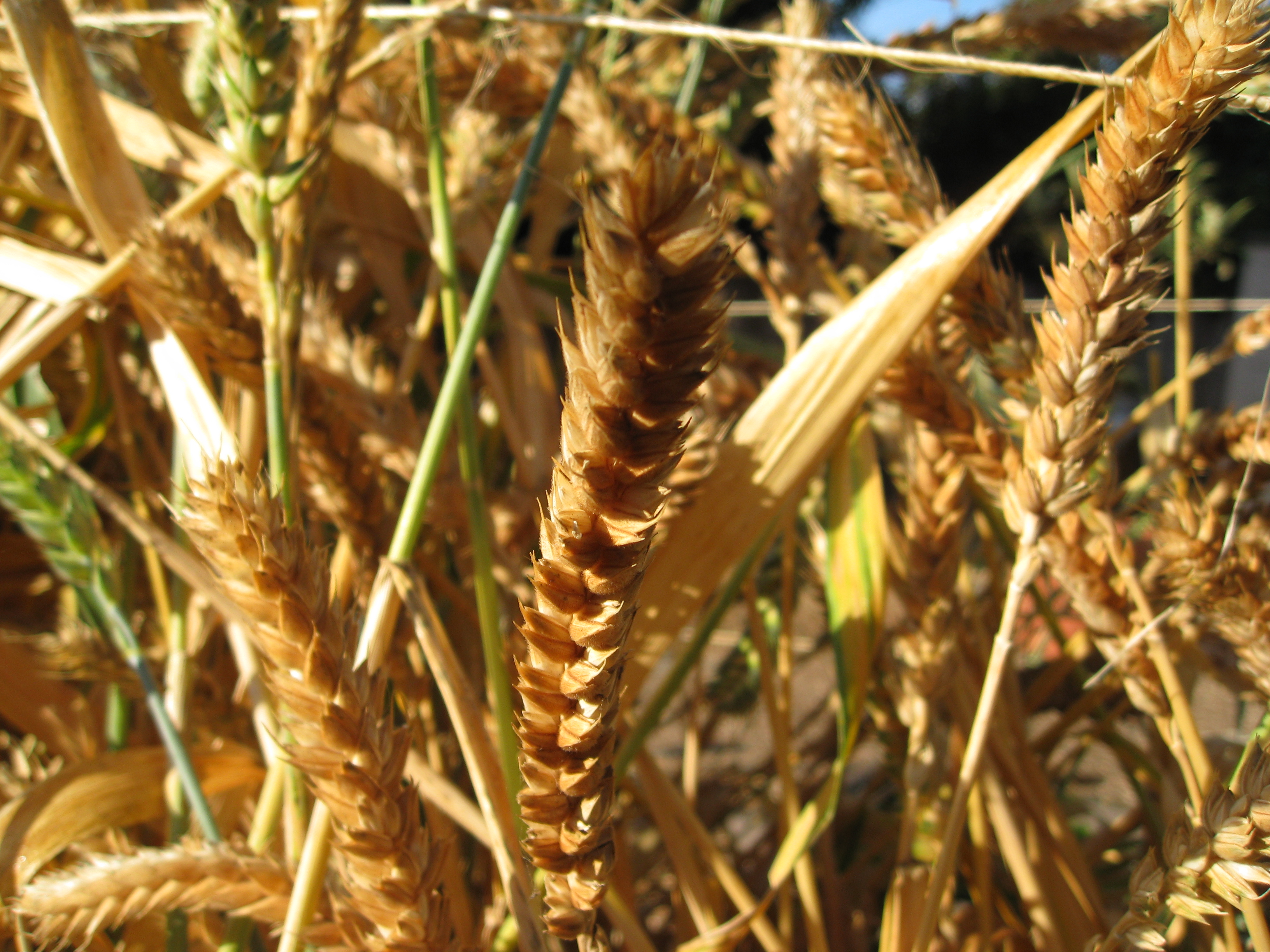
2) Bite Test – The next thing to check is bite. Place a kernel of wheat in your mouth and bite down, it should crunch. It should not be soft or chewy. If it’s chewy, leave it a while longer to dry down.
3) Nodding – Seed heads will start to nod or bow on the stem when they are ready to harvest. That gentle arch will tell you it’s time to pick them before the birds do.
4) Pick it – Next cut individual seed heads off, leaving about 10″ of stem. If you happen to have more than a 4×4 square foot bed of the crop, use a scythe and cut stalks down near soil level.
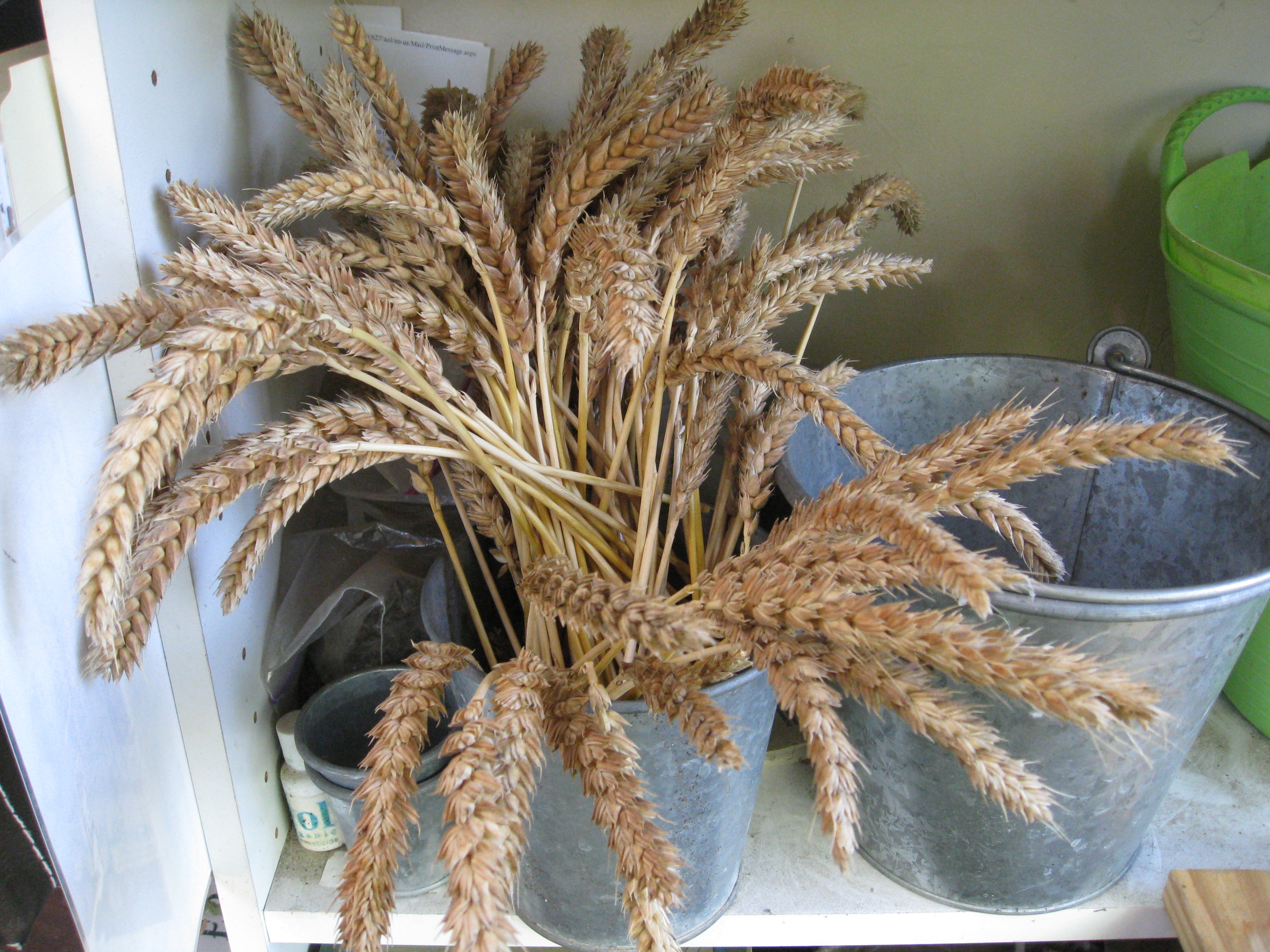
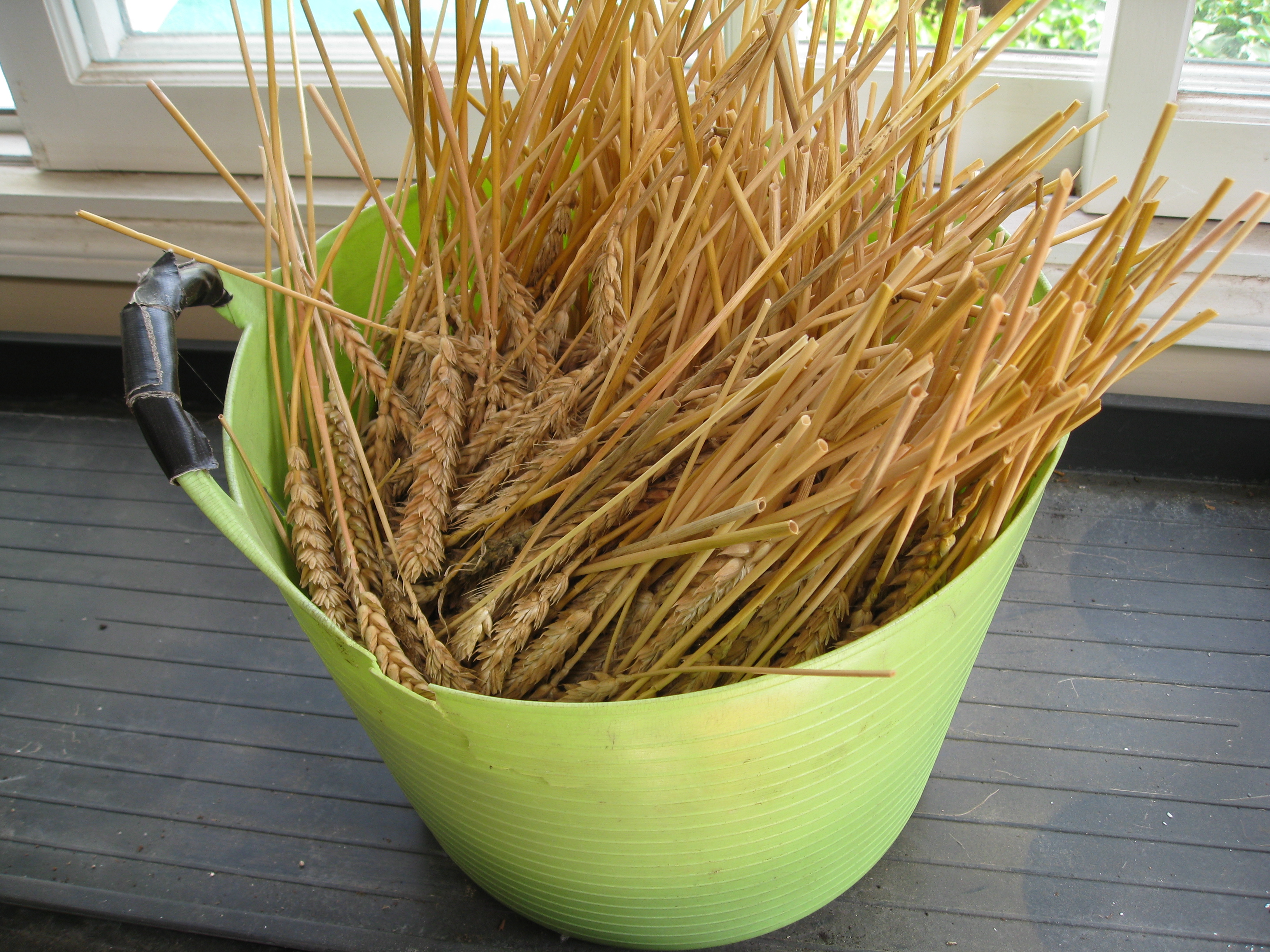
Next it’s time to thresh and clean the grains.
4) Threshing – Small-scale threshing is best done with a thresher like this, but since most of us aren’t going to invest in a piece of equipment for one job (though after doing it by hand you might think differently) we’re going to share the “slow-food method.”
Take bundles of wheat and place the stems under one foot in a trough like this…

Next, stomp and shuffle your other foot over the seed heads.
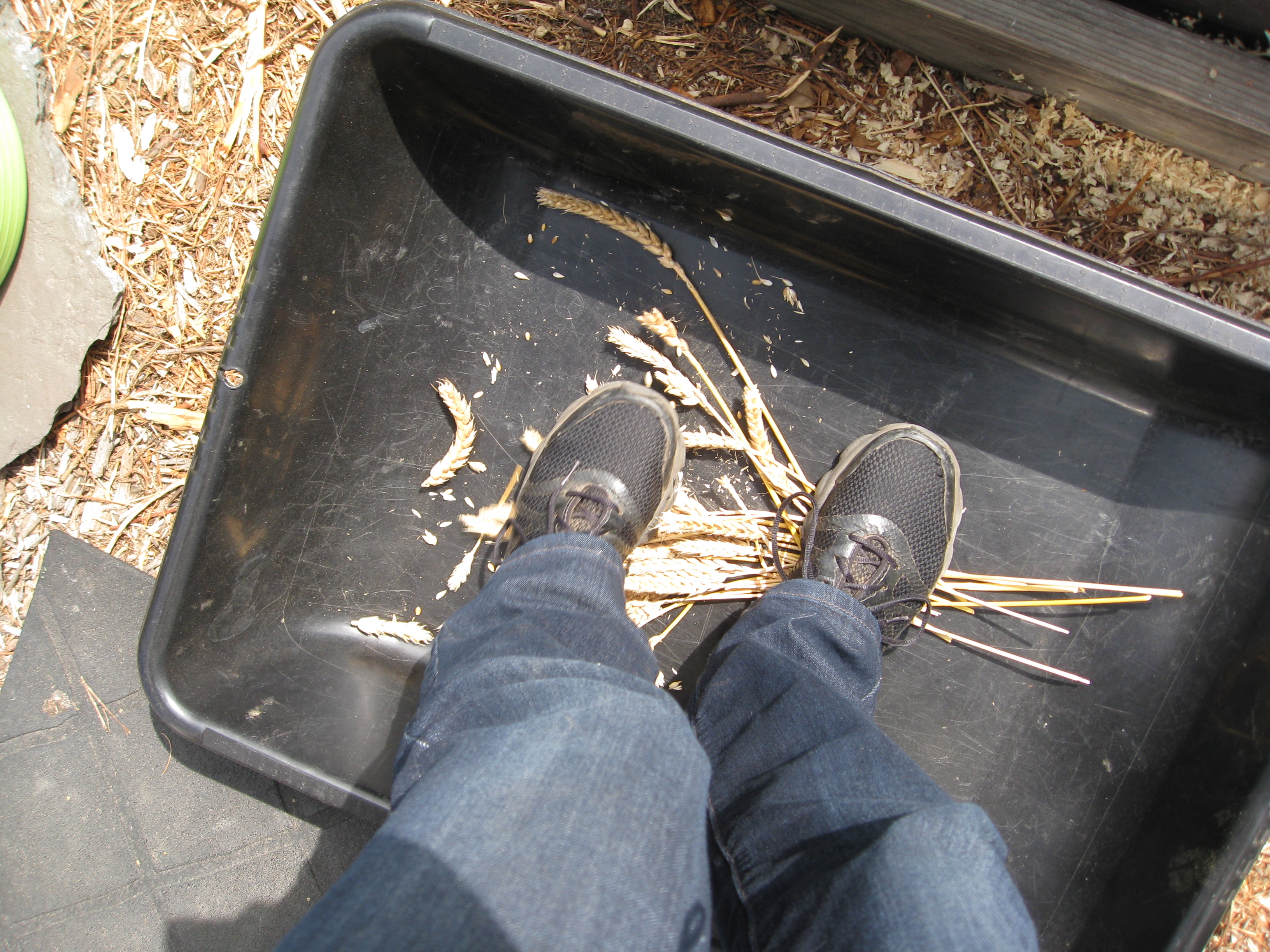
The result, after burning many calories, is loose grain and plenty of chaff. There may still be a few grains stuck inside their sheath. Friends of ours have said the best thing to do is put on a good movie and pick out individual grains while you watch.

6) Winnowing – before winnowing, it’s best to use a screen to remove most of the larger bits of seed head chaff. Then your product will flow more smoothly from bucket to bucket. For details about winnowing, check out this post.

Final step – before putting your wheat away for storage, transfer it yo an airtight container in the freezer for a few days to kill off any unwelcome critters. There’s nothing worse that finding holes in your grains a few months down the line. Take the proper steps to ensure a bug-free environment for storage.
We’re excited to try baking with our homegrown grains. More on that later, so stay tuned!

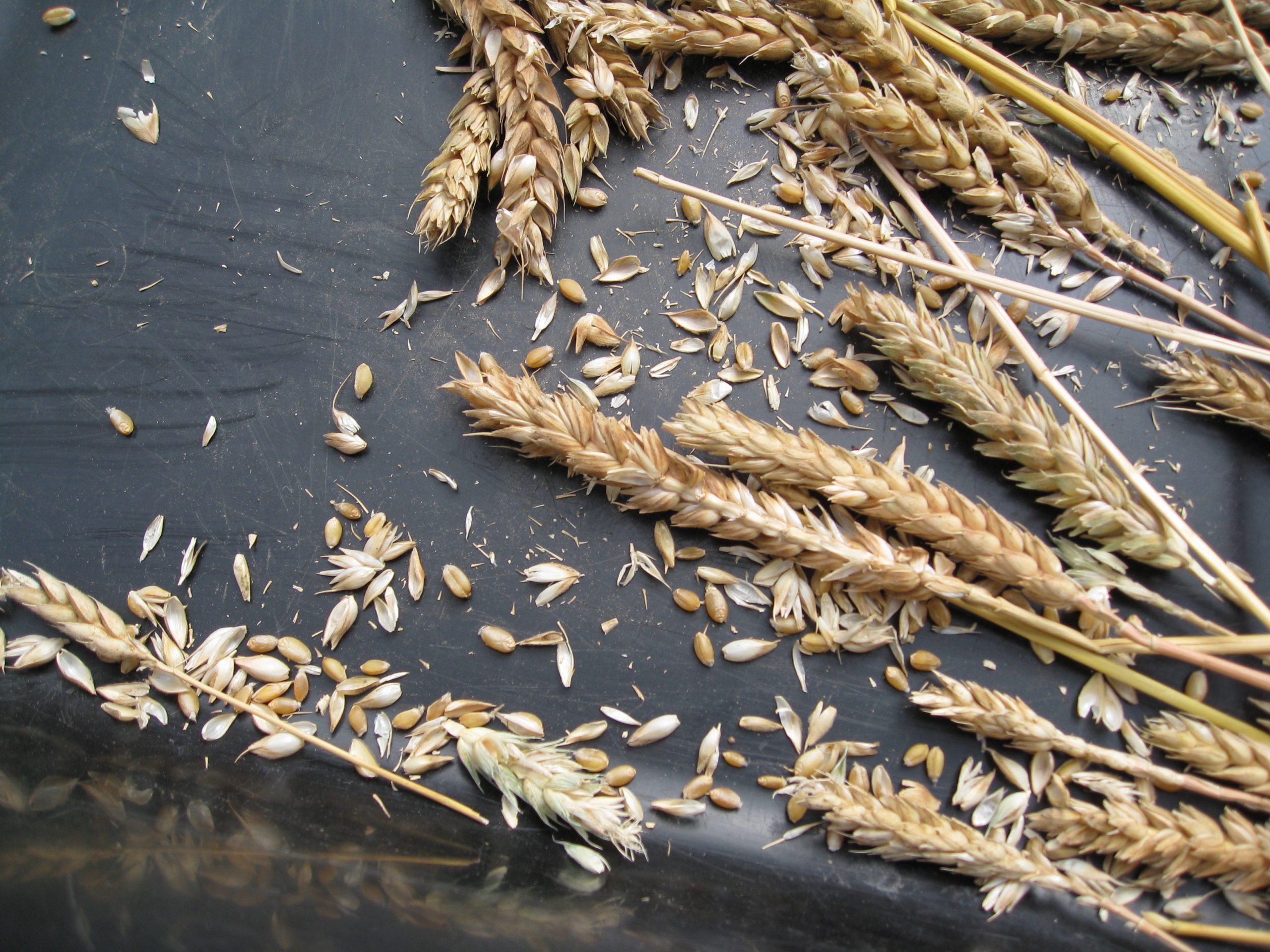


thanks for the info. my family has a little bit of wheat and its almost ready. now I’ll know when its ready for harvest
You did a good job explaining it, thanks ?
Thanks for the information on harvest date. I just finished an acrylic picture of a wheat field that needs harvesting and I need to title it. I didn’t want to be the novice I am by titling it incorrectly.
Foot threshing is easier if you put a piece of hardware cloth the size of the bottom of the box and then ‘dance’ on it in hard soled shoes. You’ll be able to lift off most of the chaff with the hardware cloth and grain remains in the bottom.
Great suggestion, Judith. We’ve seen that in action and it does help. Haven’t tried it at home yet, but we’re about to harvest this year’s Red Fife and will give it a try.
How do you know if it is wheat? I have two random looking wheat stalks in my flower garden. They look like your wheat but they have tall whisps coming out of each grain head.
I want to harvest them and but them in my homemade bread…meaning now I want to grow a whole container of them. What could be more inviting to my friends than coming over for warm bread and be greeted by golden wheat stalks. At best, since I wuld have to grow a whole filed I could make a decorative wheat stake.
Any help or direction would be appreciated.
Sincerely, pam
Hi Pam, unless someone is growing wheat nearby you or you had some wheat berries in your compost, it’s most likely a grass (as is wheat). You can let it grow to see how the seed head turns out as an experiment. Most wheat seed heads (spikes) have beards, but not all wheat. Red Fife, which I’m growing now, doesn’t have beards, whereas the Kamut I grew last year does. The stalk and grains should start to dry down this time of year and will be brown by the end of May, usually. Use these traits and characteristics to determine if you have wheat growing.
Thanks Christy,
I am noticing the stalks browning/yellowing. The seed heads have plumbed up and still have the beards. One is beginning to nod. I am wondering if the seeds came from the bird feeder since I don’t have a compost.
Still planing growing two pots full, but with grains I know for sure are wheat.
Thanks again.
Okay, that’s good to have confirmation. It’s a bit of a waiting game at this point. You may only get a 1/4- 1/2 cup of grain, but still it’s worth growing for the experimentation and the fun of it. Enjoy making bread or crackers with it!
That sounds like Oats.
Some bird seed has wheat berries mixed in. So if you’ve( or a neighbor) been feeding the wild birds a few berries could have sprouted. That how I got my first wheat plants!
That’s what happened in my backyard, it’s early July in SW Washington and the seed heads are white and dry. I’m wondering if I can use it for something edible!
Thanks for post. I see you cut your wheat with say 1/2 foot of stock. I was reading how milk goats and chicken love it too.
Very nice job, Christy. Beautiful Website reflecting your values and taste. When did you plant the wheat?
Thanks, Richard. White Sonora is a winter wheat, so we planted it in October and it went through the winter for a May harvest. We put in some late tomatoes in that spot after that and they’re doing well so far.
Thank you for the information. I planted a mini sample of winter wheat in my vegetable patch mostly for green manure and have been hoping to harvest it soon enough put ? and ? in that spot while getting wheatberries to add to bread. Im going to follow your blog to see my next steps.